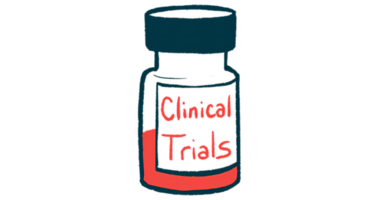Trial testing Parkinson’s disease-modifying therapy hits milestone
Clinic visits done; full data on HER-096 now expected by year's end

Herantis Pharma announced that its Phase 1b clinical trial evaluating the safety and preliminary efficacy of HER-096, a potential disease-modifying therapy for Parkinson’s disease, has hit a key milestone: All dosing regimens and follow-up clinic visits have been completed.
Top-line results from the trial (NCT06659562, EUCT2024-512532-30-00) — which tested HER-096 in healthy volunteers and people with Parkinson’s — are now anticipated in about two months, or within nine weeks, according to the therapy’s developer. Further, the full dataset, which will include data on biomarkers, is expected before year’s end.
“We are pleased to have completed all patient dosing and follow-up visits in our Phase 1b study of HER-096,” Antti Vuolanto, CEO of Herantis, said in a company press release that provided details on the trial, conducted at a single site in Turku, Finland.
“With this milestone reached, we will now concentrate on completing the data analysis and interpretation,” Vuolanto said.
Given by subcutaneous, or under-the-skin, injection, HER-096 is designed to mimic the activity of CDNF, fully, cerebral dopamine neurotrophic factor, a naturally occurring protein known to promote nerve cell survival and recovery.
Parkinson’s is caused by the progressive loss of nerve cells in the brain that produce dopamine, a signaling molecule involved in movement. Insufficient dopamine signaling gives rise to Parkinson’s hallmark motor symptoms, such as tremor, rigidity, and slow movements.
Disease-modifying therapy delivers CDNF protein to brain
The protein CDNF is found in blood and cerebrospinal fluid (CSF), the liquid surrounding the brain and spinal cord. As a treatment, CDNF has been found to protect and restore dopamine-producing nerve cells in animal models of Parkinson’s.
CDNF has since been tested in 17 Parkinson’s patients as part of a Herantis-sponsored Phase 1/2 trial (NCT03295786). In that now-completed study, participants received the therapy through a brain-implanted delivery device that directly targeted a brain region affected by Parkinson’s.
Trial data showed that monthly infusions of CDNF for six months were safe and well tolerated. Compared with a placebo, the therapy reduced both disease severity and slow movements, according to Herantis.
The delivery device was used because naturally occurring CDNF is not able to cross the blood-brain barrier, a highly selective membrane that prevents potentially harmful substances in the blood from passing into the brain and spinal cord. That barrier, however, also poses a delivery challenge for medications that may be helpful.
Herantis then set out to develop a less invasive delivery method for CNDF that also could be used in people with early-stage Parkinson’s — the patient population thought to benefit the most from this therapy. These patients have more dopamine-producing nerve cells that CDNF can rescue.
That work resulted in the development of HER-096, a lab-made version of CDNF that can reach the brain after subcutaneous injection, a property confirmed in preclinical studies.
Trial testing HER-096 funded by Fox Foundation, Parkinson’s UK
To evaluate HER-096’s safety, tolerability, and pharmacokinetics, or its movement into, through, and out of the body, the company launched the Phase 1b trial. It enrolled healthy adults, ages 50-75, and people with Parkinson’s, ages 45-80.
The study, sponsored by Herantis, received funding from The Michael J. Fox Foundation for Parkinson’s Research and Parkinson’s UK, two advocacy organizations.
In the trial’s first part, which began dosing in 2023, eight healthy volunteers received a single subcutaneous injection of 300 mg HER-096 to assess its safety and pharmacokinetics.
Data showed that HER-096 levels in the CSF exceeded the minimum target range, as anticipated from preclinical study results. Moreover, extended CSF exposure matched blood levels, supporting a regimen of two to three doses per week.
We look forward to updating the market with the topline data as we explore HER-096’s potential to become the first disease-modifying and neurorestorative treatment for Parkinson’s disease.
In the second part of the study, Parkinson’s patients were randomly assigned to receive an injection of either one of two doses of HER-096 (200 or 300 mg) or a placebo, twice weekly over four weeks.
In addition to safety, tolerability, and pharmacokinetics, part two aimed to evaluate selected biomarkers, and to identify new treatment-response biomarkers. Symptoms will be assessed via the Movement Disorder Society’s Unified Parkinson’s Disease Rating Scale, a widely used tool for evaluating the progression of Parkinson’s, and with a wearable monitoring device.
Per Herantis, “the full dataset, including biomarker data, is expected before the end of the year.”
Added Vuolanto: “We look forward to updating the market with the topline data as we explore HER-096’s potential to become the first disease-modifying and neurorestorative treatment for Parkinson’s disease.”








